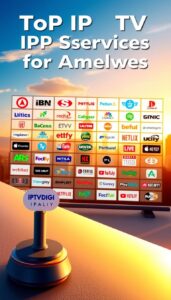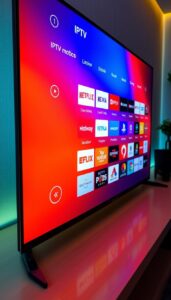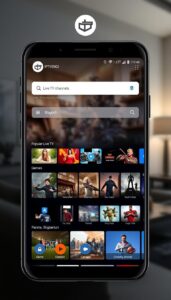Multiple Connections in IPTV Services
The world of home entertainment has changed dramatically over the past few years, and one of the most significant changes has been the rise of Internet Protocol television (IPTV) services. IPTV is a method of delivering television content over the internet, as opposed to traditional methods like satellite or cable. One of the key advantages of IPTV is its ability to provide on-demand content, allowing viewers to watch what they want, when they want. But how does the use of multiple connections in IPTV services enhance the availability and convenience of on-demand content? Let’s explore this in more detail.
First, it’s important to understand what we mean by “multiple connections” in IPTV. Simply put, it refers to the ability for a single IPTV subscription to be used on multiple devices at the same time. For example, if you have a family of four and everyone wants to watch a different show on their own device, multiple connections would allow this to happen without anyone having to share or compromise on what they want to watch.
So, how does this feature enhance the availability and convenience of on-demand content in IPTV services? One of the main advantages is that it allows for more flexibility in when and where you can watch your favorite shows. With multiple connections, you can watch on-demand content on different devices simultaneously, which means you can watch what you want, where you want, and when you want.
For example, if you’re in the middle of watching a show on your TV, but need to leave the house, you can easily switch to your mobile device and continue watching from where you left off. Or, if you’re on vacation with your family, everyone can watch their own shows on their own devices, without having to fight over the TV remote or compromise on what to watch.
Additionally, multiple connections can also enhance the convenience of on-demand content by allowing for more personalized viewing experiences. With multiple connections, each person can have their own account and preferences, meaning they can easily access their own saved shows, channels, and recommendations. This eliminates the need to scroll through a shared account to find what you want to watch, and allows everyone to have a more tailored viewing experience.
Of course, there are some technical considerations to keep in mind when using multiple connections for on-demand content. For example, the more devices that are streaming at the same time, the more bandwidth will be required from your internet connection. This means that if you have a slow internet connection, or multiple people in your household are streaming at the same time, you may experience buffering or other issues.
Additionally, some IPTV services may limit the number of devices that can be connected at the same time, or charge an additional fee for multiple connections. It’s important to do your research and choose an IPTV service that offers the number of connections you need at a reasonable price.
In conclusion, the use of multiple connections in IPTV services can greatly enhance the availability and convenience of on-demand content. It allows for more flexibility in when and where you can watch your favorite shows, as well as more personalized viewing experiences. However, it’s important to keep in mind the technical considerations and choose an IPTV service that offers the number of connections you need at a reasonable price. With the right IPTV service and multiple connections, you can truly take control of your home entertainment experience.





